Have you heard about QUIC.cloud? It’s the CDN (what is a CDN?) that is provided by the guys behind LiteSpeed – a webserver growing in popularity because of its ease of use and performance.
QUIC.cloud can be used to speed up your WordPress website globally, optimize it and secure it. Or in their own words: accelerate, optimize and protect.
In this QUIC.cloud review, I evaluate their platform on features, performance, usability, support and pricing.
QUIC.cloud FAQS
But first, let’s tackle some common questions you may have:
What is QUIC.cloud?
QUIC.cloud is a content delivery network that can host the static and dynamic parts of your WordPress website in many locations spread over the world, which are called points of presence (PoP). This makes your site load faster if visitors are further away from the place where your site is hosted. In addition, QUIC.cloud has some amazing additional services such as image optimization and WordPress security features which can make your site run much faster and more secure.
For whom is QUIC.cloud?
QUIC.cloud may be overwhelming if you are just starting out with WordPress. While it is not extremely difficult to install QUIC.cloud, it will greatly help if you have (technical) experience with WordPress.
What do you need for running QUIC.cloud?
QUIC.cloud won’t run if you don’t have your website running LiteSpeed. This can be the open-source version of LiteSpeed, called OpenLiteSpeed but also a licensed variant. QUIC.cloud is also geared towards WordPress. Check your host if it runs LiteSpeed and supports QUIC.cloud. Many hosting companies such as Hostinger or control panels such as Runcloud and Cyberpanel support (Open)LiteSpeed with WordPress.
Is QUIC.cloud better than Cloudflare?
It depends. In my opinion, performance is pretty close to Cloudflare and QUIC.cloud is easier to configure. Cloudflare has more features and a much more obvious pricing model, but it has so many options that it can be overwhelming. I personally do prefer Cloudflare.
How do you set up QUIC.cloud?
In another article, I explain how you can create a safe and fast WordPress website with Quic.cloud.
QUIC.cloud Review – TL;DR
If you don’t want to read the whole QUIC.cloud review, you should just consider these points:
- QUIC.cloud is easy to set up and even has a great free tier.
- QUIC.cloud integrates very smoothly with the LiteSpeed cache plugin and even supports dynamic caching, such as caching WooCommerce websites properly.
- QUIC.cloud’s additional features such as DDoS protection, brute-force protection, image optimization, page optimization and low quality image placeholders are great additions.
- QUIC.cloud has most of the features you would expect from a WordPress CDN and optimization service, but lacks fine control over some features such as advanced caching and firewall rules
- The pricing model is usage based which is not always that clear unless you know exactly what you’re going to use. Image optimization is priced very well compared to competitors.
- QUIC.cloud’s performance was slightly worse as Cloudflare in my testing, and they have fewer PoPs (CDN edge servers).
- Support is okay, answers are a bit short and it took up to 17 hours before a ticket was replied to.
You can also watch the above video where I walk through the process of setting up QUIC.cloud on an existing WordPress installation.
QUIC.cloud Review: The Criteria
In every review, I held the hosting provider, service, tool, theme or WordPress plugin against 5 criteria.
- Features: What does it offer?
- Performance: How well does it perform?
- Usability: How easy is the platform to use?
- Support: How fast and knowledgeable is support?
- Pricing: Do you get a good value for what you pay?
Let’s see in this QUIC.cloud review how it will do!
QUIC.cloud’s Features
QUIC.cloud has a vast array of features and is not only limited to a CDN but includes some great optimization features. It will cover most use cases but does not include fine control over some settings such as custom firewall rules.
CDN Features
- Serve your complete WordPress frontend at the CDN network of QUIC.cloud, with over 70 servers (Points of Presence) in all continents.
- Visitors that request the website will see it load from any server as close to their geographical location as possible, resulting in a fast loading website.
- Smartly cache the website on the CDN, including dynamic pages (more about that in performance)
Security Features
Because of the way QUIC.cloud is set up, it can also have some additional security features:
- Brute force protection of your WordPress login form and XML-RPC, blocking repeated attempts to log-in or guess your password.
- A CDN level reCAPTCHA to prevent attackers even accessing your site.
- DDoS protection on the application layer, preventing attackers to flood your site with thousands or millions of requests.
- A custom blocklist to block visitors and attackers from certain IP addresses, user agents or countries.
- A web application firewall to block bad bots and IP addresses.
Optimization Features
QUIC.cloud is not only a CDN, but also includes three additional optimization features (tightly integrated with the LiteSpeed cache plugin).
1. Image Optimization
- QUIC.cloud includes image optimization, which keeps the dimensions of your images the same but the filesize much smaller. And that makes a site faster.
- It directly optimizes the images in your WordPress media library after it has been set up.
2. Low-Quality Image Placeholders
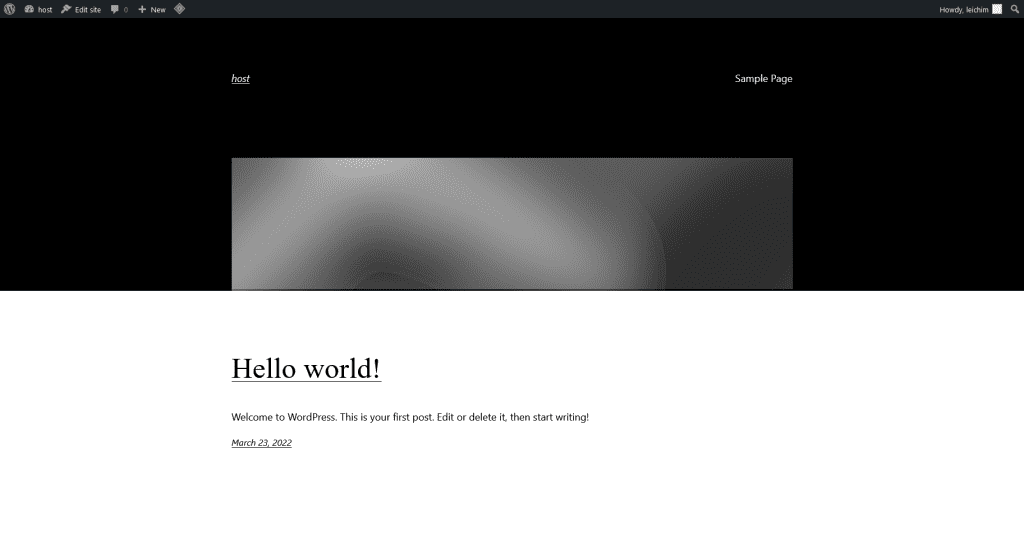
- QUIC.cloud (integrated with the LiteSpeed Cache plugin) has a functionality for Low Quality Image Placeholders (LQIP). These are temporary low quality images that come in place of original images before these large, original are fully loaded.
- LQIPS make your site load faster, because the original images only need to be loaded once you scroll there. It’s similar to lazy-loading images, but you already have a low quality image to show.
3. Page Optimization
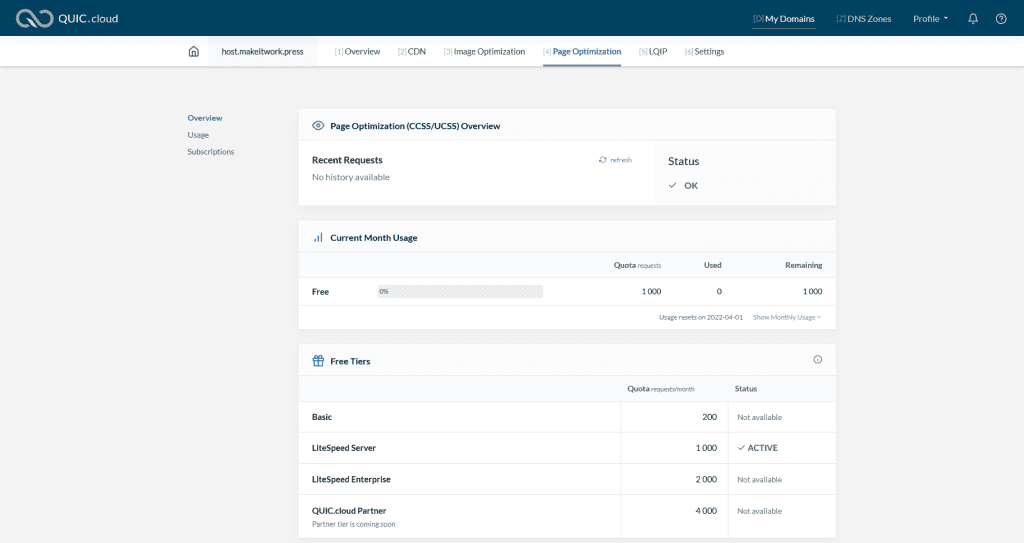
- For an additional fee, the platform can optimize your page by removing CSS that is not used and optimizing the critical CSS (CSS for the visible part of a page, above the fold).
- CSS or stylesheets are files responsible for determining the colors, layout and typography of a website.
DNS Service
The latest addition is the DNS service provided by QUIC.cloud. Do you have a domain registered somewhere? Usually, your domain registrar is taking care of the DNS services.
Simply said, a DNS connects your domain to various internet locations and services, such as the server where a website is hosted on. DNS makes it possible that when you enter a certain URL, the correct website is served (and that you don’t need to type in an IP address to visit a website).
However, some DNS services at registrars tend to be slow, and slow to update. The QUIC.cloud DNS is an anycast DNS, which makes the DNS respond and update faster.
Let’s move on to the next part of this QUIC.cloud review, the performance!
QUIC.cloud’s Performance
QUIC.cloud will certainly give a performance boost to your site if you expect visitors from anywhere on the globe. The major advantage is that it ‘caches’ your complete site on the CDN network, and even has some (basic) support for dynamic sites.
World Wide Loading Performance
I’ve tested QUIC.cloud with the global load time tester from Sucuri, which loads the site from multiple locations in the world. I’ve also done the same for Cloudflare, which is also a (competitive) CDN.
The WordPress setup was exactly the same, except for the server stack (LiteSpeed vs Nginx).
And here we go, these are the results for QUIC.cloud:
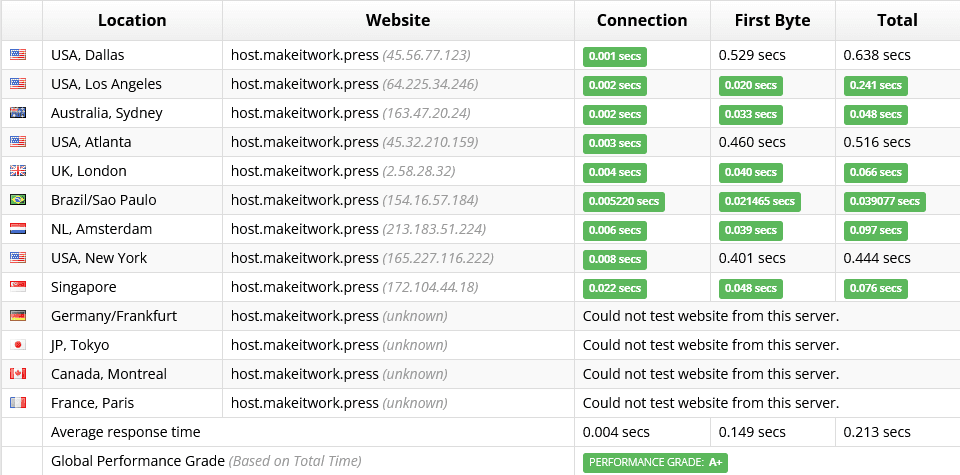
This is an excellent score with a solid A+, considering this setup did not cost me any money. For no additional costs, you have a website that runs amazingly fast from any location in the world.
If we compare this to Cloudflare, we see performance is almost identical; except for some big deviations in some USA data centres (Cloudflare is faster here).
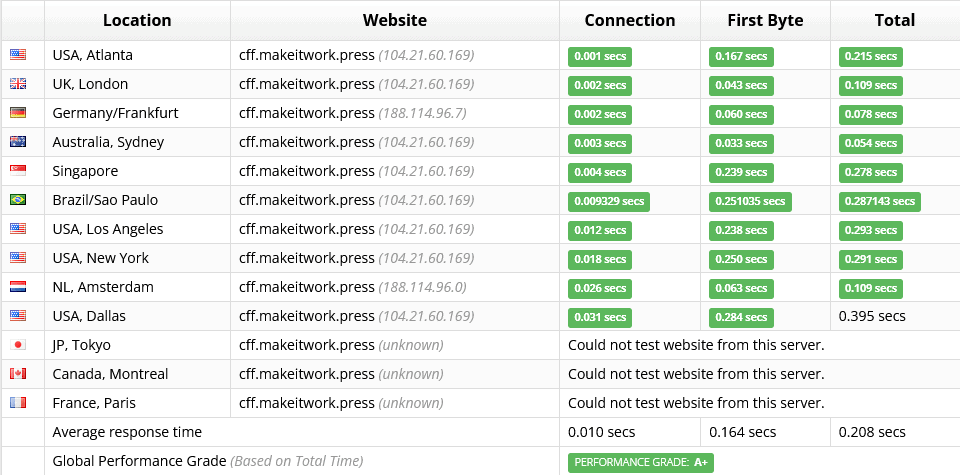
While Cloudflare has a slightly higher average Time to First Byte, it does seem to have a more consistent figure.
Indirect Performance Benefits
Using a CDN has a big indirect performance benefit. Because the traffic your website receives will be routed to the CDN for a large part, your origin server (the original server on where your website is hosted) will receive less traffic.
And less traffic means your origin server has to use fewer resources, which usually makes up for a more responsive website.
Image Optimization Performance
Image optimization is an important aspect of making your website faster, as large images can have a lot of influence on your page’s loading speed.
The Image Optimization service of QUIC.cloud is doing very well, being able to compress images up to 90%. It’s much better than some free services such as SMUSH or EWWW image optimizer. However, in my experience, other services such as Shortpixel did a tiny fraction better (up to 5% smaller images).
One advantage is that the optimization service can also be used to serve .webp images, which is an image format that is even smaller.
Edge Side Includes (ESIs) and Cache Tags
Another interesting aspect is that QUIC.cloud supports ESI and Cache tags, which makes pages such as shopping carts also cacheable and purges your caches when needed. Usually, dynamic pages can not be cached because the content is unique for every visitor (and with caching, the same copy is served to multiple visitors) but with QUIC.cloud, it can be. This can greatly enhance the performance.
QUIC.cloud’s Usability
In my opinion, QUIC.cloud’s usability is great; the control panel is clear and it does not overwhelm you with thousands of options. The only drawback is a relatively long waiting time before the CDN is activated.
Let’s briefly walk through a couple of screens and walk through the user experience!
The Dashboard
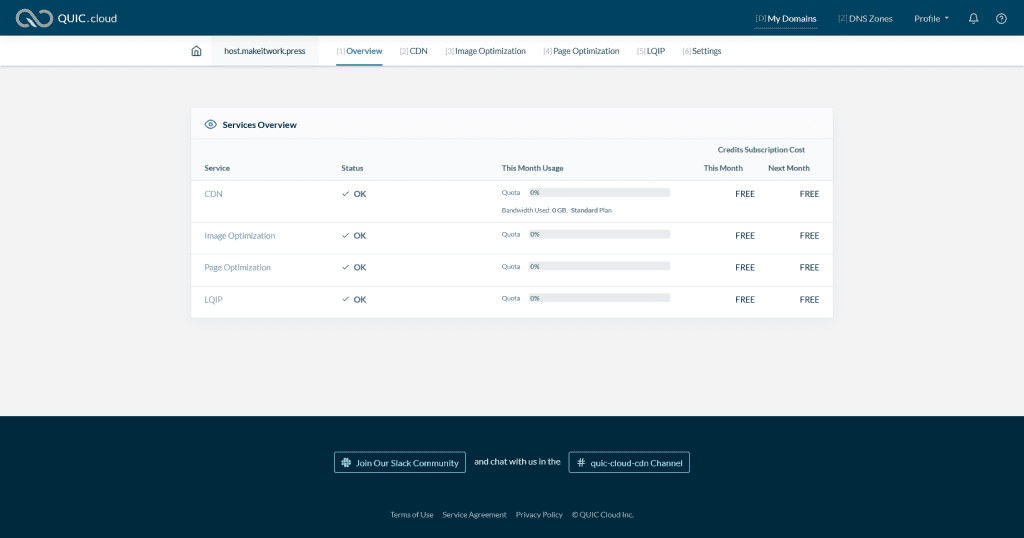
The dashboard gives a clear overview of all the usages per service, and it’s very easy to switch sites by clicking on the address in the left corner. Subsequently, all main services and settings are placed in the horizontal menu on the top.
Managing A CDN and Security
When clicking on a service, such as CDN, a submenu will be added to the left, whereas on the right you can easily modify all settings.
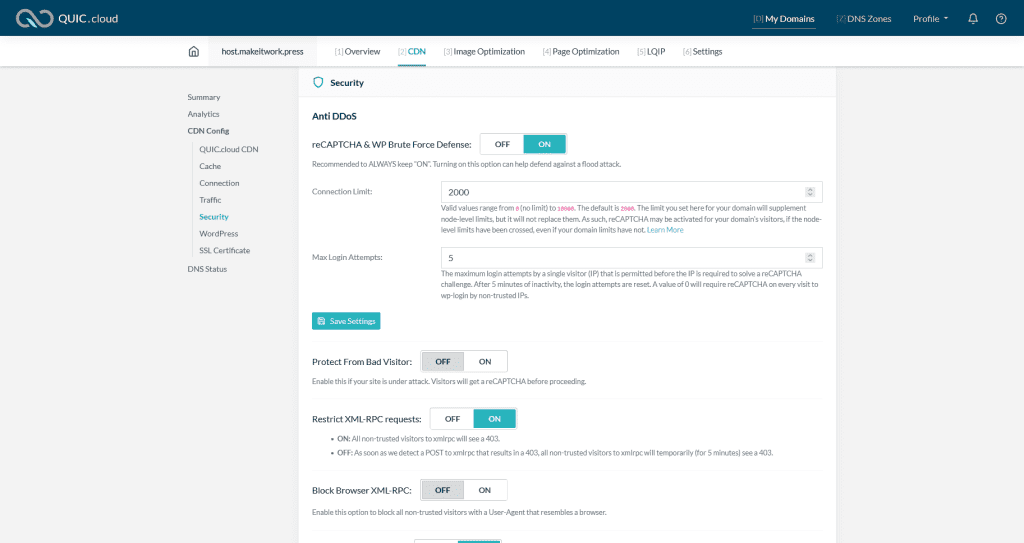
The biggest advantage of QUIC.cloud is that the number of settings is not as overwhelming as some other services (looking at you Cloudflare), and all settings are clearly explained.
The Image Optimization Screen
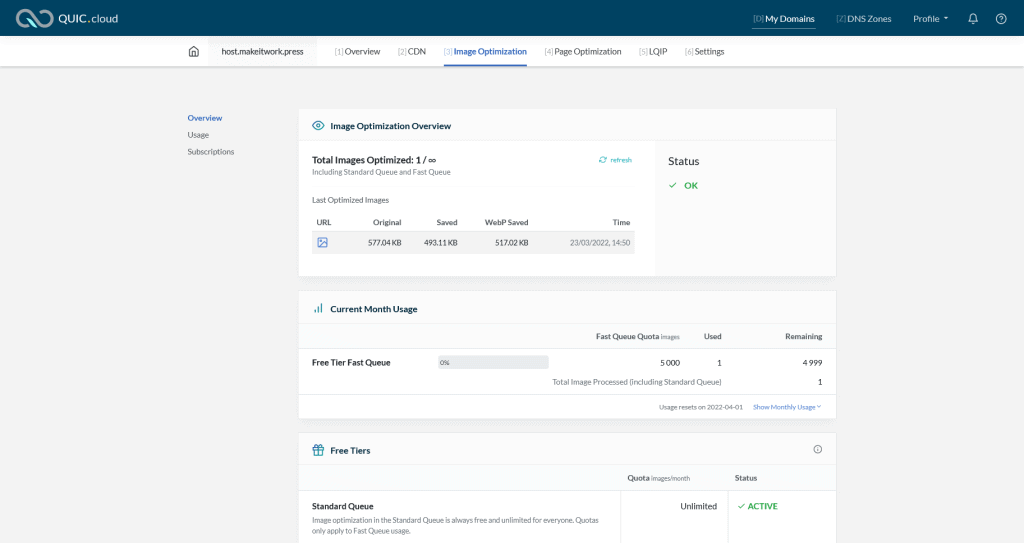
In the image optimization screen, the usage and the last optimized images are shown. It’s also visible how many of the quota is used, and how many total images are optimized.
Other Screens
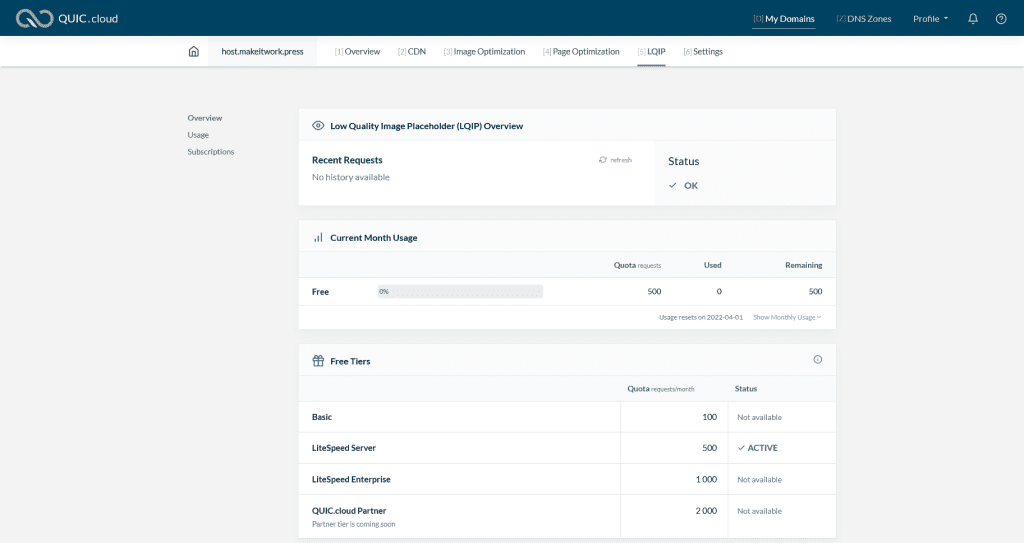
Other screens, such as the screen for page optimization and low-quality image placeholders are pretty similar in layout and usability.
QUIC.cloud’s Support
Support of QUIC.cloud is limited to ticket-based support, but even on free tiers, you are able to get support. Response time is okay, but support answers are a bit short.
Support Uses Tickets
Support is only possible by creating a separate support account from within the dashboard. After creating an account, you can send tickets. Responses to these tickets will also be notified over email.
Support Response Time
Upon receiving the ticket, I got the first response in 17.5 hours. This is not bad and falls within the 24-hour range, but is not shockingly fast either.
Support Quality
I prepared 4 questions I had on QUIC.cloud, three of which were technical of nature and one which was related to billing. These questions were answered, but especially the answers to the technical questions were really short and not extremely helpful.
QUIC.cloud’s Pricing
QUIC.cloud gives a good amount of free monthly starting credits and some great free tiers. It is also priced very reasonably. However, the pricing is based on usage and not on a fixed monthly fee. The credit-based pricing models make pricing also confusing.
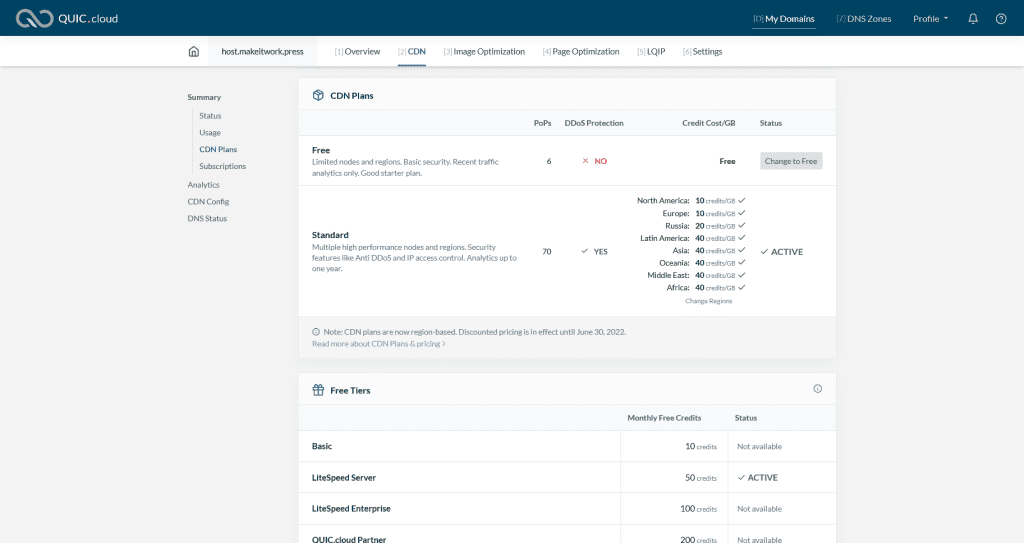
Image optimization costs are inexpensive compared to some other image optimization providers. Especially for smaller sites, you can probably run them for free and still take advantage of some premium features such as DDoS protection.
Pricing Models
QUIC.cloud works with credits which you can purchase beforehand.
The usage-based pricing is both an advantage and a disadvantage. You’re not paying more than you’re using. But if you’re using it a lot, it may grow more expensive than CDNs with a fixed price.
The upside is that for most of the services offered by QUIC.cloud, there is also a free tier available. With QUIC.cloud you can get an amazing CDN with (dynamic) caching for free, which is a better offer than most providers out there.
CDN Pricing
The CDN has a free option available, which will put your sites on 6 PoPs in Europe and America but doesn’t include advanced WordPress security options such as DDoS Protection and XML-RPC protection.
For the advanced CDN, you have the following monthly credits available for free (depending on which version of LiteSpeed you use on your server and if you are a hosting partner):
- Basic: 10 free credits (1GB of bandwidth)
- LiteSpeed server: 50 free credits (5GB of bandwidth)
- LiteSpeed Enterprise: 100 free credits (10GB of bandwidth)
- QUIC.cloud hosting partner: 200 free credits (20B of bandwidth)
CDN costs are determined per GB, which range from 10 credits ($0.01) to 40 credits ($0.04) depending on the region. More information can be found on the CDN pricing page.
Image Optimization Pricing
Image Optimization pricing is a bit odd because there are five levels in how pricing is calculated and they stack up. There is a slow queue which is free for an unlimited number of images, but it can take a while before images are optimized.
Then we have the following three subscription levels, or better, subscription additions:
- Fast queue, faster processing for 20.000 images at 5000 credits per month ($5).
- Priority line, even faster processing for 1000 credits a month ($1)
- Jumbo group, processing multiple images at once (2000 credits, $2 a month)
You can also prepay the fast queue. For every 10.000 images optimized, you need to have 3000 credits – in other words, optimizing 10.000 images will cost you $3. This is less expensive than most other image optimization services out there.
Again, based on the version of LiteSpeed you are using, free images are included for the fast queue, ranging from 1000, 5000, 10000 to 20.000 images.
Page Optimization Pricing
Page Optimization is subscription-based, with various levels of requests:
- 10.000 requests for 5000 credits a month ($5)
- 20.000 requests for 8000 credits a month ($8)
- 30.000 requests for 10.000 credits a month ($10)
Similar to the CDN, there are a number of free requests available, ranging from 200, 1000, and 2000 to 4000 requests depending on the LiteSpeed version you are using.
Low-Quality Image Placeholders Pricing (LQIP)
For LQIPs, you can purchase as needed 3000 requests for 2000 credits ($2).
Similar to the CDN, there are a number of free requests available for LQIPs, ranging from 100, 500, and 1000 to 2000 requests depending on the LiteSpeed version you are using.
Anycast DNS Pricing
Using the anycast DNS is free. Yay!
Costs Per Credit
Credits can also be bought beforehand. The costs per credit are straightforward: $1 per 1000 credits, but credits become cheaper when you buy more of them.
- 5000 credits cost $5
- 12000 credits cost $10
- 25000 credits cost $20
- 130000 credits cost $100
QUIC.cloud Review: The Verdict
If you are using LiteSpeed and if your website caters to visitors all over the globe, QUIC.cloud is basically a no-brainer. Its free tiers already include some good features and you’ll get a good amount of monthly starting credits for each of its premium services.
QUIC.cloud is relatively easy to set up and has good usability. It’s also reasonably priced, but its pricing model of using credits can be a bit confusing. They do have ticket support but don’t expect fast and elaborate answers.
If you don’t use LiteSpeed, it may be harder to set up as it is very easy to integrate QUIC.cloud with the LiteSpeed cache plugin. While LiteSpeed is praised for its performance, great cache plugin and low resource usage; NGINX still seems to be faster.